I sewed the bodice using the wiggly stitch that Abby describes on her blog, Stay-ing Alive. I love this stitch and the definition it gives to seams.
Draping the back of the piemontaise can be found here--coming soon, and a very short tutorial on cuffs can be found here.
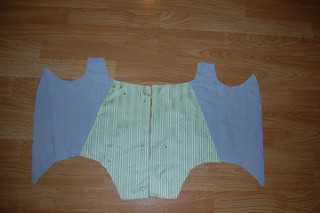
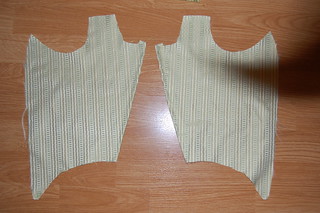
To make the cutaway front, I decided what shape I wanted it to be and cut two pieces based on that--the center front that I edgestitched to the linen lining using point a rabbatre sous la main, and the cutaway. The pieces overlap, and the diagonal front of the cutaway is hemmed.
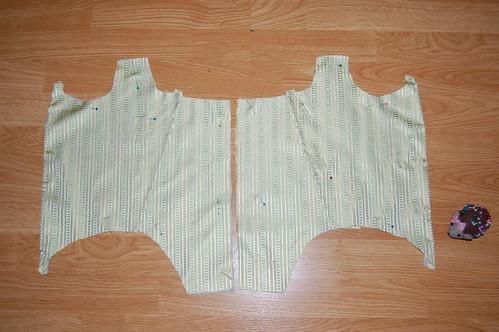
To combine the two pieces, I just laid the cutaway on top, pinned it around the edges, and sewed the hemmed edge to the lining with a running stitch. To prepare for sewing, I turned the seam allowances of the lining and silk towards each other and pinned.

Similarly, to prepare the center backs, I folded the seam allowances of both silk and lining towards each other.
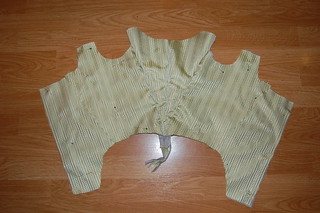
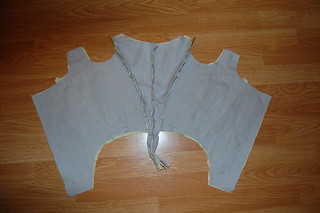
Here's the whole thing pinned together, from the back and the front. When sewing the back seams, it's important to not sew the lining together for the top inch of the seam (so you can turn the neckline in for finishing) and, depending on your skirt style, the bottom edge of the seam so you can insert the skirt between the silk and lining.
For some skirt styles, you can finish the edge and whip the pleats to the finished edge, but I found enclosing the pleats was easiest--for me at least--with the piemontaise.
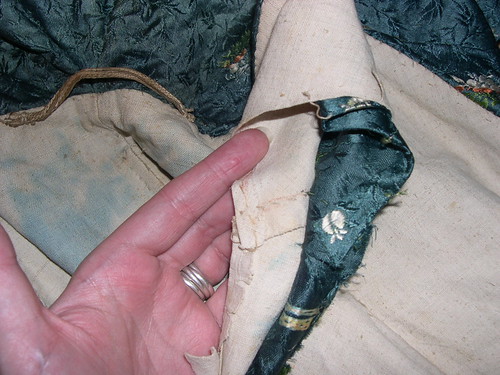
Here's a picture of my original 1790s bodice that shows the lining and silk sewn separately.
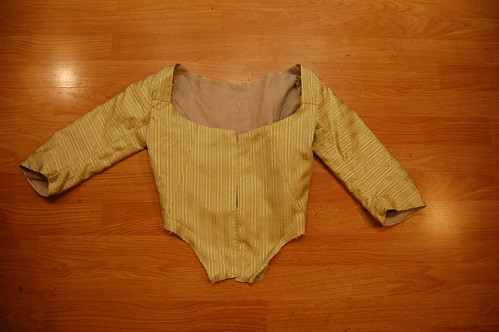
After sewing the side and back seams, I added the shoulder straps. I folded the seam allowances under on the silk and topstitched them to the silk layer only of the bodice, and then I folded the seam allowances of the lining under, and whipstitched them to the lining layer only.
To finish the neckline, the lining and silk are turned towards each other and edgestitched.
I then added the sleeves. The examples of piemontaises that I found had modern set sleeves, so it was very straightforward. An option would be to sew the sleeve between the silk and lining and cover the seam allowance with the lining as in my original 1790s bodice, but I chose not to do that here.

And here's an inside view, showing the separate lining and silk, ready to have a skirt added!

No comments:
Post a Comment